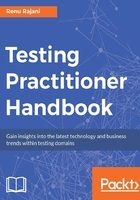
QA organizations would follow hybrid QA teams (centralized and decentralized)
In this section, we will discuss the future organization of QA teams.
As per WQR2015, the use of internal independent industrialized test TCOE stabilized and would see decline.
Use of a combination of centralized and decentralized teams (Hybrid) for QA grew from 35% in 2013-14 to 43% in 2014-15.
WQR 2015 reported 24% respondents citing plans to have internal TCOE as against 24% in 2014-15 and 23% in 2013-14.
A total of 18% cited no plan for TCOE in 2015-16 as against 20% in 2014-15 and 26% in 2013-14.
A total of 11% cited plans to use third-party TCOE in 2015-16, as against 15% in 2014-15 and 19% in 2013-14.
Trend towards Hybrid QA teams – point of view
The preceding observations point to a need for testers to work with developers through life cycle—shift-left as well as shift-right. Use of dedicated TCOEs will not continue to rise as in the past and shall need to scale to provide services in platform as service model.
In the future, we will see a cross-functional team leveraging the automated toolsets optimally to push the tested functions into production leveraging DevOps Enablers (Continuous Planning, Continuous Integration, Continuous Testing, Continuous Deployment, Continuous Monitoring, and Continuous Improvements) to deliver a highly performing system yet reducing the time to market considerably.
A tester will be expected to be aware of the functional details and help a developer by isolating the bugs to the extent of pointing to the line of code, indexing structure of the database, and pin-pointing the infrastructure that is becoming the bottleneck in meeting business objectives.